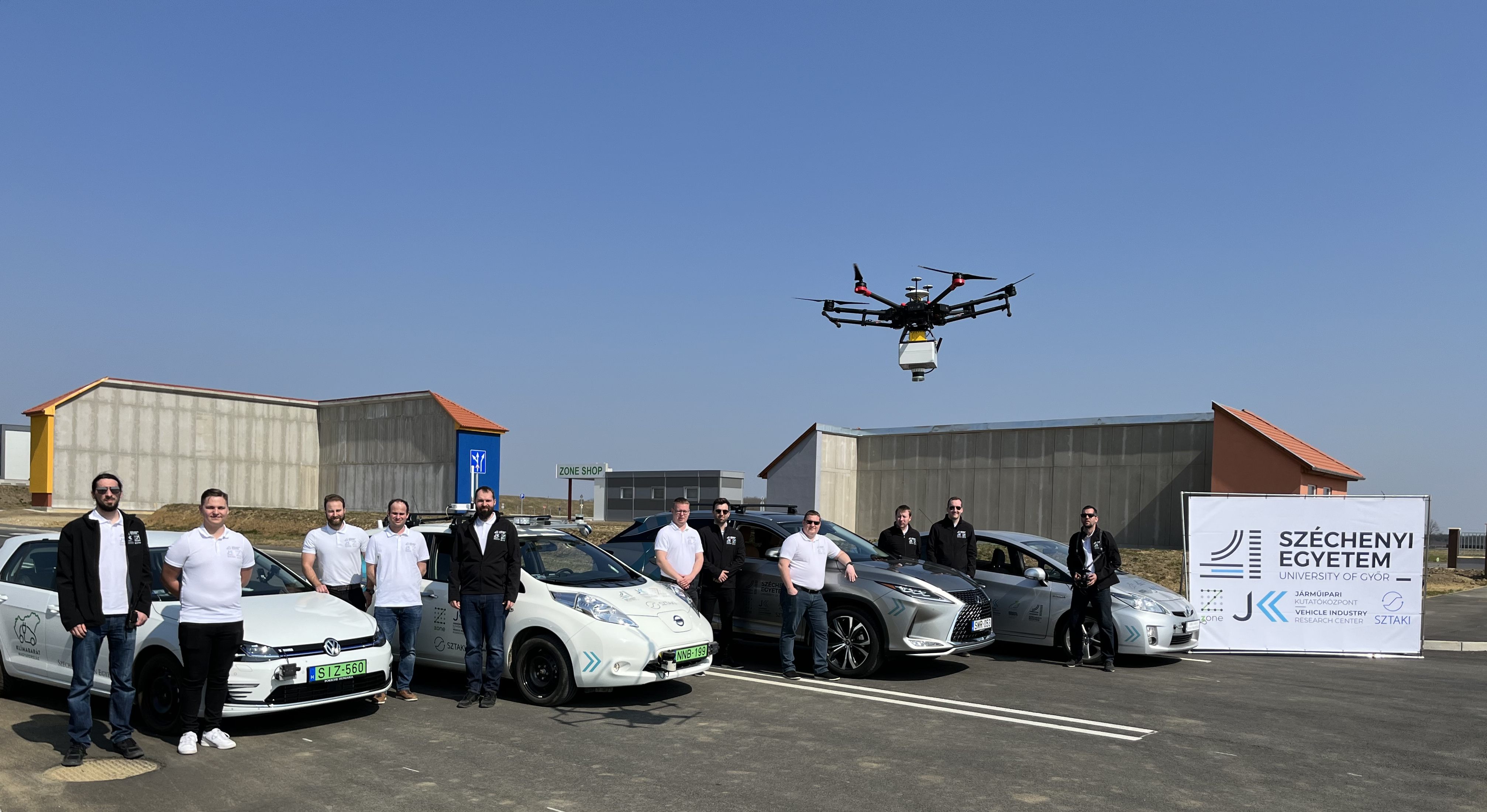SZE presents R&D activities at ZalaZONE test track inauguration
Széchenyi István University’s Automotive Industry Research Centre gave a spectacular demonstration of its research and development activities at the inauguration of the ZalaZONE Automotive Test Track on 26 March. In addition, the ongoing developments show the continuous strengthening of the institution's presence in Zalaegerszeg.
The ZalaZONE Automotive Test Track in Zalaegerszeg was completed on a 265 hectare site with a total investment of HUF 45 billion, and was inaugurated by the programme's Ministerial Commissioner, László Vigh, Member of Parliament, who reported the completion of the investment to Prime Minister Viktor Orbán.
The Prime Minister stressed that it is important "to be faster than others, to recognise the future sooner", and the test track can help in this from a technological point of view. He added that this was the idea that convinced the members of the government that it was worth supporting the development. He pointed out that the automotive sector plays a huge role in the development of Hungarian industry. In 2010, eighty thousand people were working in the Hungarian automotive industry, and now 150,000 families make their living from it.
Jean Todt, the UN Special Envoy for Road Safety and former technical director of the Ferrari Formula 1 team, said in his speech that he had been able to see the test track under construction two years ago, which had made a big impression on him, and congratulated the Hungarian government for supporting this forward-looking investment. “Technologies for future transport development are tested and born here," he stated.
Staff of Széchenyi István University’s Automotive Industry Research Centre at the ZalaZONE Automotive Test Track.
Minister of Innovation and Technology László Palkovics told MTI on the occasion of the event: “The uniqueness of ZalaZONE's world-class research and development infrastructure lies in the fact that, in addition to traditional vehicle dynamics tests, it also enables the testing and development of automated, networked and electric vehicles.” He added: "In 2019, as the first phase of the investment, the test centre with offices and workshops for users, was completed, as well as the first three track elements - the dynamic surface, the high-speed handling track and the Smart City, with which commercial exploitation was also commenced. In the last two years, in addition to the other sections of the Smart City Zone, the facility has added eight modules to its portfolio of services, including a braking surface, a motorway section, a highway module, a university track module, a low-grip handling track, a noise measurement surface and gradients.”
The Minister also pointed out that universities and research institutes have been involved in the operation of ZalaZONE from the very beginning. A research network cooperation has now been established between Széchenyi István University, Győr, the Budapest University of Technology and Economics, the Pannon University of Veszprém, the Bay Zoltán Applied Research Non-profit Ltd. and several Western European higher education institutions. László Palkovics said that the expansion of high-tech manufacturing and R&D capacities will lay the foundations for strengthening the knowledge-based economy in Hungary and create the conditions for sustainable growth. Thanks to the competitive research infrastructures and the innovation ecosystems built around them, Hungary can play a leading role in the introduction of revolutionary technologies at European level, he said.
The presence of Széchenyi István University in Zalaegerszeg is visibly growing: the development of the Science and Innovation Park - an incubation and accommodation building - will soon be completed. In addition, the procurement of state-of-the-art tools and equipment to support automotive research is already underway.
The University of Győr has demonstrated all this in connection with the inauguration of the test track as part of the annual work programme of the VEAB Automotive Industry Working Committee, a regional organisation of the Hungarian Academy of Sciences in North Transdanubia. The University's Centre for Automotive Research, in collaboration with the Computer Technology and Automation Research Institute (SZTAKI), also showed a piece of its research and development: the audience could see a self-driving car, autonomously and without intervention, avoiding several obstacles consisting of vehicles, and also with the addition of a drone, using its sensor data, illustrating one use of augmented sensing. In addition, in preparation for future industrial R&D, the Centre’s ZalaZONE unit presented a radar cross-section measurement and a diagnostic procedure for real-time assembly of a high-voltage battery system.
.jpg)
Prime Minister Viktor Orbán speaking at the inauguration ceremony of the ZalaZONE Automotive Test Track












